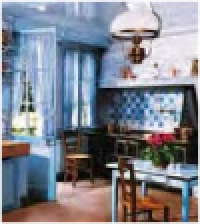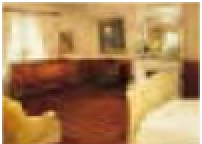Travel Reference
In-Depth Information
Japanese Prints
Monet's precious woodblock prints
are hung in several rooms, according to
a plan drawn up by Monet himself.
1
2
Sitting Room-
Studio
Monet used to come to
his simply furnished
studio
(left)
after dinner
to relax, smoke, and
examine his day's work.
3
0
7
4
6
9
8
Monet's Bedroom
The room where
Monet slept for 43 years,
and eventually died, still
has most of its original
furniture, including a fine
18th-century inlaid desk.
Endearingly, Monet kept
works by the artists he
most admired in his
bedroom
(below)
: among
them Cézanne, Renoir,
Manet, Pissarro and
Rodin - a collection now
scattered worldwide.
Sight Guide
From the entrance on
rue Claude Monet into
an outbuilding, stairs
lead down to the water
lily studio. Outside is
the Clos Normand. In
the southwestern
corner, an underground
passage leads to the
water garden and
Japanese bridge. On
entering the Pink
House, beside the
entrance, you must turn
left and follow the
circuit round from the
small blue reading room
to the sitting room-
studio, then upstairs to
the bedrooms. The tour
ends with the dining
room and kitchen.
Dining Room
Imagine Monet,
together with Alice
Hoschedé, her children
and visiting artists,
seated around the large
dining table in this
perfectly restored room,
painted in two shades of
yellow, with faïence
plates and Japanese
prints on the walls, and
vestiges of the dinner
service in two dressers.
Kitchen
Little seems to have
changed over the past
century in this delightful
room
(above)
- an
extension built by Monet,
with blue-and-white-tiled
walls, a handsome cast-
iron range, butler's sink,
terracotta floor, and
burnished copper pots
and pans.
Water Lily Studio
His sight affected by
cataracts, Monet built
this large, light studio
between 1914 and 1916,
to work on his water lily
series. It now houses the
shop of the Fondation
Claude Monet.
For more on artists in Normandy
See pp48-9
35

















